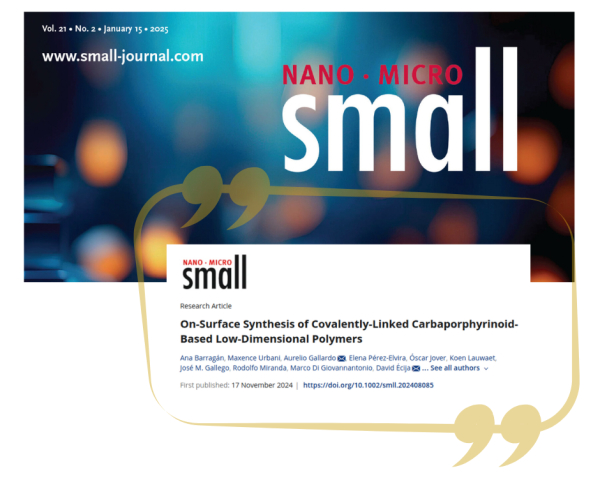A team of researchers from CNR-ISM and IMDEA Nanociencia (Espana), has successfully synthesized novel low-dimensional polymers based on porphyrinoid structures, offering exciting prospects for electronic, optical, and catalytic applications.
The study, conducted under ultrahigh-vacuum conditions, utilized surface-assisted synthesis to create both one-dimensional (1D) and two-dimensional (2D) carbaporphyrinoid-based polymers.
The breakthrough was achieved through a precise molecular design, incorporating controlled carbon-carbon coupling and halogen-functionalized precursors. Notably, the team also introduced cobalt atoms into these structures, resulting in a highly unusual two-fold metal coordination—challenging conventional tetrapyrrole chemistry.
This pioneering work paves the way for the development of atomically precise nanomaterials, with potential implications for catalysis, molecular electronics, and quantum materials.
Thursday, 27 March 2025 11:07
On-Surface Synthesis of Carbaporphyrinoid-Based Polymers - New article
New two-dimensional polymers based on porphyrinoid structures have been successfully synthesized, offering promising prospects for electronic, optical, and catalytic applications. This breakthrough was achieved through precise molecular design, incorporating controlled carbon-carbon couplings, halogen-functionalized precursors, and cobalt atom coordination.
The study, conducted under ultra-high vacuum conditions, utilized surface-assisted synthesis to create both one-dimensional (1D) and two-dimensional (2D) carbaporphyrinoid polymers.
Article published in Small.
Published in
Publications


 English (UK)
English (UK)  Italiano (Italia)
Italiano (Italia)